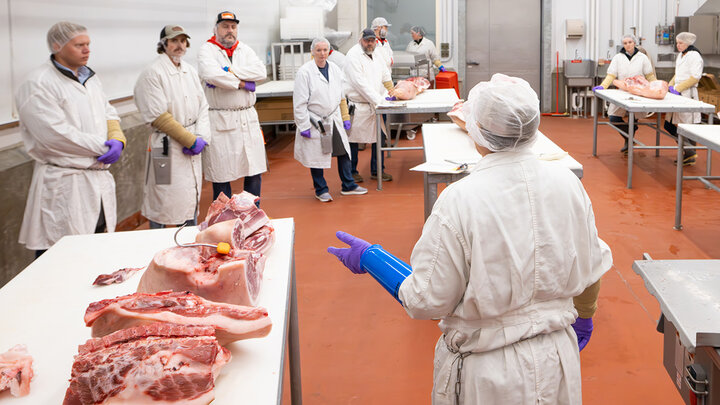This article was first published by RightRisk News in November 2024.
A business strategy is a plan of action designed to achieve specific goals and objectives using available resources. For most businesses, profitability is a primary objective. When a farm or ranch develops a business strategy to increase profits, it creates a roadmap that informs future decisions for financial success. But when does a business strategy become a risk? At first glance, this may seem like a trivial question. However, in the unpredictable world of agriculture, understanding how uncertainty affects the achievement of strategic goals is fundamental to managing an operation successfully. This is the essence of managing strategic risk.
Strategic risks arise from uncertainties that can derail a business strategy. Internal uncertainties, such as poor communication or financial challenges, are common culprits. Communication breakdowns often hinder the implementation of strategies within agricultural operations. Similarly, financial uncertainties, especially low cash flow, are a leading cause of business failure. Even the best ideas cannot succeed without adequate financial resources.
Another internal uncertainty is the management team’s ability to execute a strategy. While a manager may feel confident during the planning stage, unforeseen challenges often require critical skills they may lack. This gap can be mitigated by seeking external expertise, but this is not always feasible. Delayed acknowledgement of these deficiencies further increases risk.
External Uncertainties
External uncertainties, including market dynamics and technological changes, also threaten strategic plans. For instance, shifting consumer demands or emerging technologies can reshape agricultural practices. Supply issues compound these risks, as favorable profit margins often attract new entrants or expansions by existing producers. These supply fluctuations can drastically alter market conditions, challenging the viability of even the best-laid strategies.
Distinguishing between strategic risk and operational risk is critical. Operational risks pertain to immediate, day-to-day challenges, such as equipment breakdowns, weather events, or workplace injuries. While these risks can influence long-term strategies, they primarily require present-focused solutions. For example, an operation may adopt a strategy of leasing equipment to reduce maintenance costs. Operational risks in this scenario might involve ensuring employees are adequately trained to operate leased machinery. By contrast, strategic risks might include rising leasing costs or insufficient cash flow to cover lease payments in future seasons.
The Calf Retention Decision: Strategic Risk in Action
A pressing question for many agricultural producers this fall is whether to retain calves. Market conditions appear favorable: cattle prices are high, feed costs are low, and many producers have excess feed due to improved forage production. At first glance, retaining calves seems like an attractive opportunity to increase profits and optimize resource use.
Calf retention is a strategic decision because it shapes and informs numerous future decisions, including how long to retain ownership, what to feed calves, and how to allocate resources. While some aspects of the strategy can be determined upfront, retention often initiates a cascade of interdependent decisions related to production, marketing, finance, and personnel. Committing resources to retain calves can also impact the operation’s financial and production capacity for the following year.
A common mistake in calf retention planning is focusing solely on current market prices versus feed costs. This approach presents a strategic risk because it overlooks the broader implications and uncertainties of the decision. Favorable market conditions can create a false sense of security, leading to an oversimplified analysis.
To manage the risk of calf retention effectively, managers must assess the economic risks associated with the strategy. These include the capital required to retain calves and the total production costs, which must be offset by future revenue. For example, the value of a 580-pound steer at $300 per cwt. is $1,740. Over a 120-day retention period, additional costs such as feed, labor, and interest may total $230, bringing the total cost to $1,970. If the steer gains two pounds per day, it will weigh 820 pounds at the end of the period, with a break-even price of $240.24 per cwt. Managers must consider whether future market prices will exceed this break-even price to generate a profit.
Managing Financial and Operational Risks
The financial risks associated with calf retention can be significant. Retaining a large number of calves ties up substantial capital for an extended period, potentially straining cash flow. Additionally, production risks—such as lower-than-expected weight gains or mortality—can erode profit margins. For instance, a one percent decrease in weight gain increases the break-even price to $242.67 per cwt. Managers must evaluate whether their financial reserves are sufficient to absorb such risks and align with their risk tolerance.
Operationally, day-to-day management is critical. Feeding schedules, health monitoring, and employee training must be optimized to ensure the retention strategy stays on track. Strategically, managers should identify key signals that indicate when adjustments are needed. For example, market conditions may signal an opportunity to protect prices, or production outcomes may suggest exiting the retention strategy early. Building these signals into the strategy helps create a robust plan that proactively addresses challenges and maximizes profitability.
Balancing Risk and Opportunity
Agricultural managers must constantly navigate risks while pursuing opportunities. The goal of risk management is not to eliminate risk but to assess trade-offs and design strategies that align with the operation’s objectives. Reducing threats to strategic goals is important, but so is seizing opportunities to implement innovative, profitable strategies.
In calf retention and other decisions, understanding and preparing for risks fosters resilience and enhances the likelihood of success. By balancing operational vigilance with strategic foresight, agricultural managers can make informed decisions that drive long-term profitability and sustainability.
Listen: Nebraska FARMcast
RightRisk News Team:
Jay Parsons
Professor and Farm and Ranch Management Specialist
Director, Center for Agricultural Profitability
Department of Agricultural Economics, University of Nebraska-Lincoln
John Hewlett
Extension Educator
Department of Agricultural and Applied Economics, University of Wyoming
Elliott Dennis
Associate Professor and Livestock Risk Management Specialist
Department of Agricultural Economics, University of Nebraska-Lincoln
Jeff Tranel
Agricultural and Business Management Extension Specialist
Colorado State University




